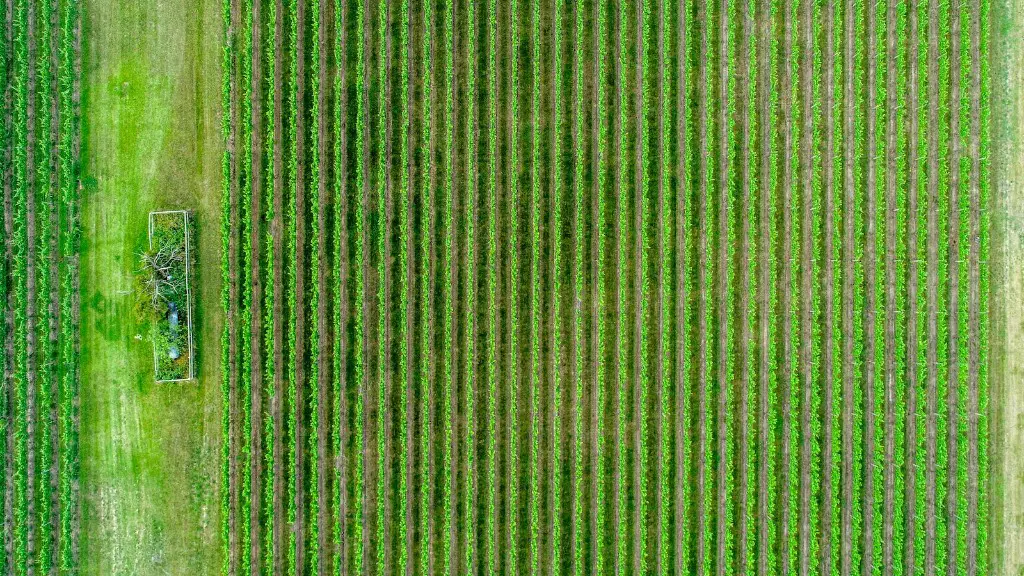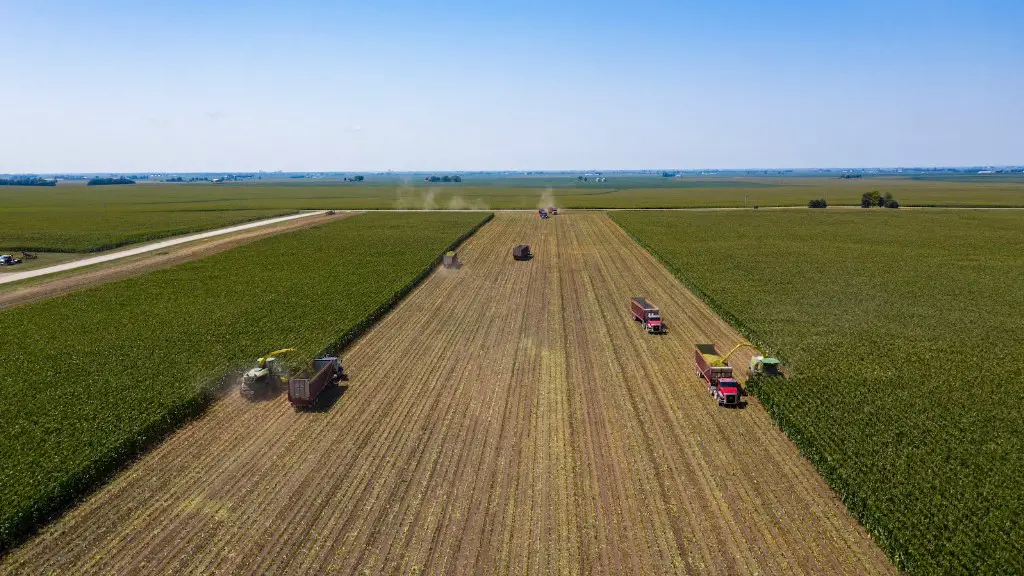The AgriculturalRevolutionof the 18th century was a period of significant agriculturalchange in Britain. It saw a move away from the small-scale, subsistence farming that had characterised the British countryside for centuries, towards a more commercialised, industrialised system. This change was driven by a number of factors, including population growth, the enclosure of common land, and the increasing commercialisationof the British economy. The Agricultural Revolution led to a significant increase in food production, which in turn helped to drive the Industrial Revolutionof the late 18th and early 19th centuries. It also led to a significant increase in the number of people living in towns and cities, as more and more people were drawn to the economic opportunities that these new, industrialised centres offered.
In the 18th century, Britain underwent a series of changes that led to a more urbanized society. One factor was the Agricultural Revolution, which saw a shift from small-scale, subsistence farming to large-scale commercial agriculture. This increase in production led to a decrease in the price of food, which made it possible for more people to live in cities. Additionally, the industrialization of Britain led to the growth of towns and cities as people moved from the countryside in search of work. The rise of the middle class also contributed to urbanization, as this group had the money to buy property in cities and to support businesses there.
What caused agricultural to change in Britain?
The Agricultural Revolution was a period of unprecedented increase in agricultural production in Britain. This was made possible by new agricultural practices such as crop rotation, selective breeding, and a more productive use of arable land. These innovations allowed Britain to become a world leader in agriculture, and laid the foundation for the country’s Industrial Revolution.
As enclosure deprived many of access to land or left farmers with plots too small and of poor quality, increasing numbers of workers had no choice but migrate to the city. This had a number of effects on the city, including an increase in the number of people living in poverty and an increase in crime.
How did the Agricultural Revolution cause urbanization
The advances in food production led to better diets and longer life spans. As the population increased, the pool for workers in industry increased. Most of these jobs existed in cities and new factory towns. This led to mass migration to urban areas.
The Agricultural Revolution of the 18th century led to improved farming techniques and increased food production. This allowed for a population spike and increased health. The new farming techniques also led to an enclosure movement, which paved the way for the Industrial Revolution in Britain.
How did agriculture change in Britain in the 18th century?
The Napoleonic Wars were a time of great change for Britain. The country was forced to become more self-sufficient and this led to a number of reforms, including the introduction of new methods of farming. This led to higher yields and enabled Britain to more easily feed a growing population. The pace of reform accelerated during this time and Britain emerged from the wars as a stronger and more independent country.
The Agricultural Revolution was a period of unprecedented increase in agricultural production in Britain. This was due to increases in labor and land productivity between the mid-17th and late 19th centuries. The Agricultural Revolution had a profound impact on the British economy and society, and helped to make Britain one of the most prosperous countries in the world.
How did agriculture help in urbanization?
The results of our study showed that crop production increases with urbanization, when considering both the increased cropland area and the increased crop yield.Crop yield is affected by soil fertility, as well as other factors such as farming technologies. With more people living in urban areas, there is a greater demand for crops, which in turn drives up prices and encourages farmers to increase production. The increased production then leads to increased urbanization, as more people are drawn to the cities in search of better economic opportunities.
The Second Agricultural Revolution saw the industrialization of farming in order to increase crop yields with fewer workers. This period marked the growth of cities and the beginning of the First Industrial Revolution. The Agricultural Revolution was a pivotal moment in human history that led to the modern world as we know it today.
How agriculture is affected by urbanization
As the world population continues to grow, the demand for food will increase exponentially. This in turn will lead to an increase in the conversion of agricultural land to urban areas in order to accommodate the growing population. While this may lead to some benefits, such as increased economic activity, it will also result in a continuous loss of agricultural land. This is problematic as agricultural land is a finite resource and is essential for feeding the world’s population. In addition, the loss of agricultural land will have indirect effects, such as the increased use of non-productive rural activities, as people are forced to move away from urban areas.
There are a number of factors that are contributing to the global food crisis. These include: increasing urbanization in the developing world; worsening conditions of the urban poor; wars and natural disasters that disrupt food supplies from rural areas; environmental degradation and resource limitations that cause greater food scarcity; the movement for community sustainability; and recognition of the right to food as a fundamental human right.
The food crisis is a complex issue that requires a concerted effort to address all of the underlying causes. We must work to improve conditions for the urban poor, reduce the impact of wars and natural disasters on food supplies, and reverse the trends of environmental degradation and resource depletion. We also need to support the movement for community sustainability, and ensure that everyone has access to the food they need to live a healthy and dignified life.
What was the main cause of the process of urbanization?
There are two primary causes of urbanization: natural population increase and rural to urban migration. Population growth leads to an increase in the number of people seeking residence in urban areas. This, in turn, puts pressure on resources, leading to rural to urban migration. As people migrate to cities in search of opportunities and better living conditions, the city grows larger and more complex, causing further problems and ultimately leading to the growth of mega-cities.
The process of urbanization began in the United States in the late 18th century and continued into the 19th and early 20th centuries. Cities grew because industrial factories required large workforces and workers and their families needed places to live near their jobs. Factories and cities attracted millions of immigrants looking for work and a better life in the United States. The rapid growth of urban areas led to problems such as overcrowding, crime, and poverty. Governments and private organizations responded with programs and policies designed to improve conditions in cities. The trend of urbanization continues in the United States today.
How did the changes in agriculture influence the development of industrialization
Although the Industrial Revolution was a time of great progress, it would not have been possible without the large, cheap work force that was available at the time. With a growing population, there were fewer men available for agriculture, which meant that more men were able to find employment in other industries. This, in turn, helped to drive the Industrial Revolution forward.
The British Agricultural Revolution was a period of time in which the agricultural practices in England, Scotland, and Wales were improved. This led to an increase in food production, which in turn led to a population growth. By the end of the Revolution, the population had more than tripled.
How did the agriculture change with industrialization?
New technology and government policies have encouraged farmers to scale up their operations in recent years. This has led to larger farms and fewer farmers working smaller areas of land. The economies of scale gained by producing larger numbers of products have motivated many farmers to make this change.
The agrarian system and policies pursued by the British created a number of problems for the people of India. The most significant problems were stagnant agriculture, indebted peasantry, galloping landless labouring class, deaths due to malnutrition, famines and epidemics. These problems led to the suffering of millions of people and the death of many.
Conclusion
The Agricultural Revolution in Britain was a period of dramatic increase in agricultural productivity in the British Isles, due to improved techniques and new technologies. The Agricultural Revolution began in the early 18th century and lasted until the late 19th century.
The agricultural revolution in Britain led to increased food production, which in turn led to increased population growth and urbanization. The combination of new technologies and a more efficient agricultural system allowed for more people to be supported by a smaller agricultural workforce. This increase in population and urbanization led to further changes in British agriculture, including the enclosure movement and the development of new crops and livestock.





